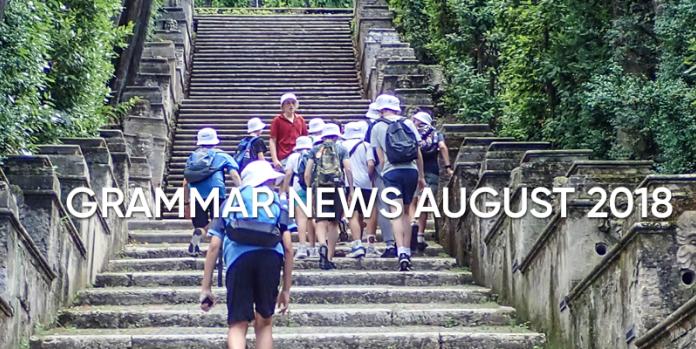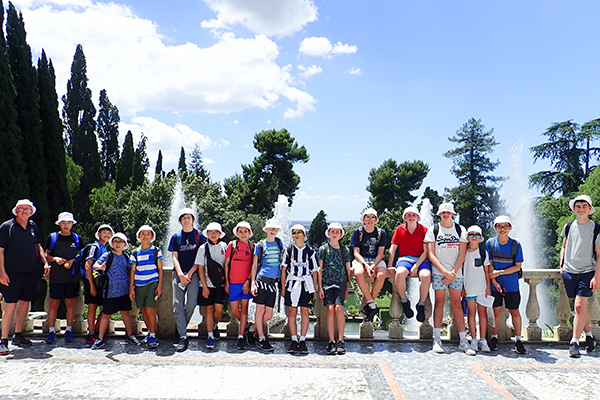Year 8 Latin student, Seb Cheston, reports on the recent Classics tour to Italy, where students gained context for their studies.
Sixteen eager Year 8 Latin students and two teachers headed off to Rome on the first day of the June/July school holidays for an educational extravaganza.
On our first full tour day, we set off on foot to the Colosseum and the Forum. There we met our tour guide, Francesco, and we went through the Colosseum discussing the materials it was built out of and how the pollution has changed the colour of the stone. Something that shocked me was that, at one point, the whole Colosseum was filled with water and a naval battle was fought in it!
While in Rome, we also had the opportunity to visit the Vatican, Hadrian’s Mausoleum and the Roman Catacombs. A personal highlight was the visit to the Villa d’Este in Tivoli, around an hour away from Rome. The Villa had a spectacular garden and contained numerous amazing fountains.
From Rome we headed to Sorrento via Herculaneum and Pompeii. I found it extraordinary that many of the buildings there were well preserved, despite Mt Vesuvius’ eruption.
After a night in Sorrento, we set off to Paestum where we saw the best-preserved Greek temples in the world.
I learnt that the temples were dedicated to a Greek God. For instance, one temple was thought to be dedicated to Poseidon. The temples were unique, and it is astonishing to think they were made without sophisticated mechanical equipment. The final destination in our Sorrento stay was cruising to the nearby island of Capri. Whilst on Capri, we experienced some of the best views in the world from the site of Tiberius’ palace, the Villa Jovis.
We then headed inland to Orvieto where we stayed in a farmhouse, La Cacciata. Here we relaxed, playing lots of soccer and swimming in the farmhouse pool. We even managed to make some pasta for dinner and visit remnants of the Etruscan civilisation in the Orvieto underground.
Although Latin is a ‘dead language’, this trip helped bring it alive. Latin is written everywhere around Italy and is used in language every day. We saw this by decoding several Latin inscriptions on the trip.
This trip was an amazing opportunity and has helped foster strong friendships amongst the Latin cohort.
Seb Cheston Year 8

